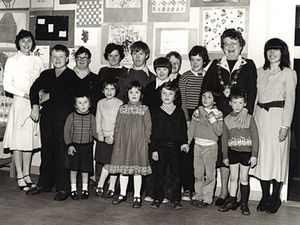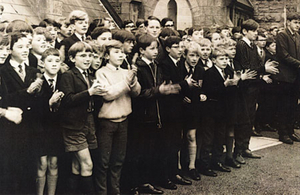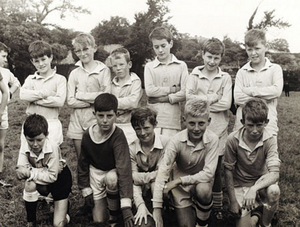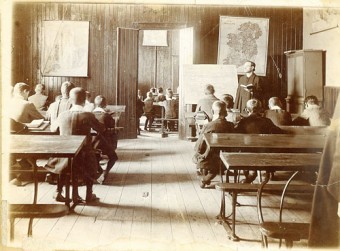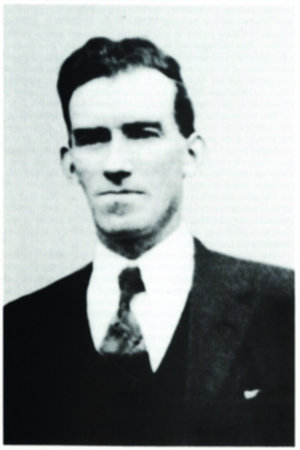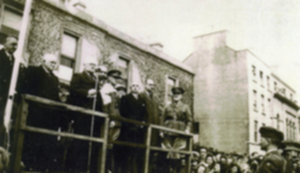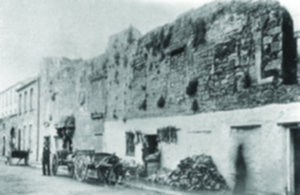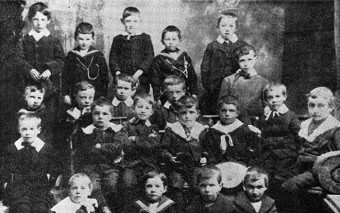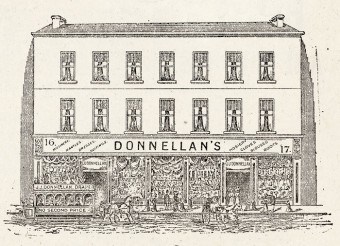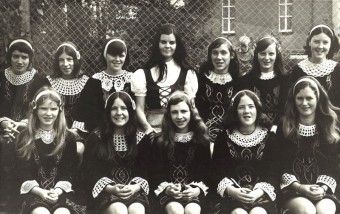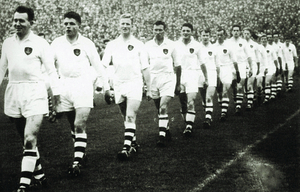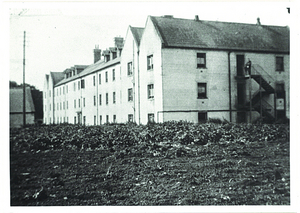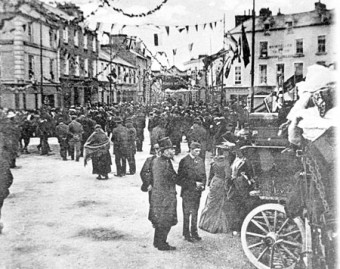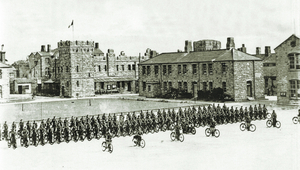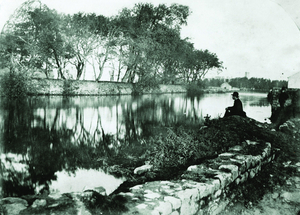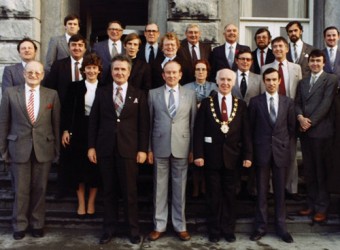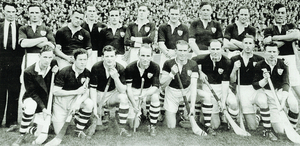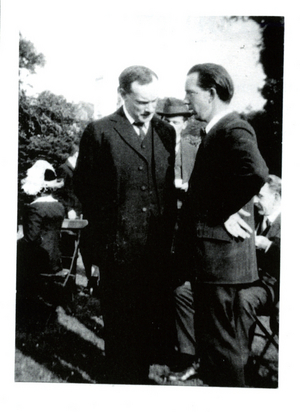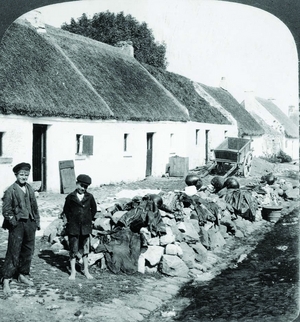From humble beginnings to a digital school of distinction
Thu, May 22, 2014
In 1961, Seán Keane, a parent of a child with an intellectual disability, wrote a letter to the Connacht Tribune. He was looking for what all parents want for their children, a chance for them to achieve their full potential whether they be disabled or not. He got no response, so two months later he wrote again, this time a reply to his own letter. The National Association of Mentally Handicapped in Ireland had just been established, it saw the letter and it asked the local Irish National Teachers Organisation in the shape of Mick Raftery and Mícheál McSweeney to call a meeting.
Read more ...Bunscoil students in the Jes, 1963
Thu, May 15, 2014
In 1962, the Jesuit community in Sea Road celebrated the centenary of their school, and the following year they celebrated the centenary of the Church of St Ignatius. Eamon de Valera, who was president of Ireland at the time, attended the church celebrations, and our photograph today shows some of the students of the bunscoil applauding his arrival.
Read more ...The Devon park under-14 team, 1967
Thu, May 08, 2014
The great strength of the Gaelic Athletic Association is that it has spread into virtually every street and small village in the country. Having players and supporters all over Ireland has made this organisation one of the most popular and one of the most powerful in the land.
Read more ...Calling all Jes boys and girls
Thu, May 01, 2014
There is historical evidence to show that there were Jesuits working in Galway in the early 1600s. Even before that, men from the west of Ireland were entering the Jesuits which indicates that their reputation had arrived here very shortly after the Order was founded. They had a chequered history here (as they had in the rest of the country) in that they were banished several times, but they kept coming back.
Read more ...Eamonn Corbett and 1916
Thu, Apr 24, 2014
Eamonn Corbett came from Kileeneenbeg near Clarinbridge. He was associated with the Volunteer movement in County Galway from 1914 onwards. After the Redmondite split he gave valuable assistance in organising the Volunteers throughout the county, and in 1915 he was assisting Liam Mellows while training the various companies in the Brigade area.
Read more ...Constitution Day, April 18, 1949
Thu, Apr 17, 2014
On that day 65 years ago, the Government declared Ireland to be a Republic. This did not help Anglo-Irish relations at the time, and it also upset deValera and his Fianna Fáil colleagues, but it was the cause of public celebrations around the country.
Read more ...Market Street, one hundred years ago
Thu, Apr 10, 2014
The title of this photograph is ‘Old Building, Market Street’ and it was taken about 100 years ago. The building in the foreground was at one time occupied by the Augustinian nuns who were based in Galway (where the Mechanics is today in Middle Street) before 1651. The last Augustinian nun to die in Ireland is buried in Forthill. These sisters formed part of the same Augustinian Order as the friars, as do their contemplative successors today in countries like Spain and Italy. Continuing persecutions and other historical pressures saw to the end of these nuns in Ireland, though some lingered on in Galway up to the middle of the 19th century.
Read more ...Richardson’s pub, Eyre Square
Thu, Apr 03, 2014
The first reference to Eyre Square, or ‘The Green’ as it was then known, was in 1631 when it was planted with ash trees by Sir Valentine Blake. It was located outside the East Gate of the medieval city. “The square plot at the Green was set apart for the purpose of public amusement and recreation; it was enclosed with wooden rails and handsomely planted around.” The 1651 map of Galway features a row of small buildings which ran the length of the east side of the square.
Read more ...The Presentation Convent
Thu, Mar 27, 2014
One hundred and ninety five years ago this week, the Presentation Sisters opened their convent on Presentation Road, on March 25 1819 to be precise. Some years before that, Doctor ffrench, the warden of Galway, went to Kilkenny to ask the sisters there if they could found a convent here. He had a fund for the purpose, and so, on October 27 1815, three sisters arrived to a house in Kirwan’s Lane. This building was not large enough for them and the 30 girls of the school which had been handed over to them by a committee of ladies, so they moved into a larger house on Eyre Square where they remained for three years.
Read more ...Donnellan’s of Shop Street
Thu, Mar 20, 2014
This drawing of the facade of John J Donnellan’s business on Shop Street appeared in the Connacht Tribune of April 9, 1910. The accompanying text said: “Ladies and Gentlemen, I say you cannot do better than call at Donnellan’s, the popular Drapery House for your millinery, your mantles, your blouses, your dresses. Men, for your suitings, your outfittings etc. All goods marked one price – The Lowest. All departments crammed full with the latest novelties”.
Read more ...Fifty years a-dancing
Thu, Mar 13, 2014
The word ceili means a gathering of neighbours in one house, which emphasised the social nature of the gathering. This inevitably led to music, singing, and dancing, to people doing their party pieces. There were a lot of ceilis in Mick and Maisie Hession’s household on Kingshill in Salthill. Mick Hession was an uileann piper who played a number of other instruments as well, and he regularly had other musicians visit the house for sessions.
Read more ...The 1956 All Ireland final
Thu, Mar 06, 2014
“Grey beards may tell tall stories of ‘The days when men were men’ but never, I feel certain, was there an All-Ireland Senior Football final so completely, and let me add, so distressingly satisfying as the 1956 decider yesterday in Croke Park where Galway defeated Cork by 2 – 13 to 3 – 7.
Read more ...The Central Hospital
Thu, Feb 27, 2014
“The newly constituted County Hospitals and Dispensary Committee met for the first time on the 25th of February, 1922, in the boardroom of the old gate lodge of the old workhouse to organise the transfer of the Galway Hospital (Infirmary) on Prospect Hill to the workhouse site.” The hospital (which was where the county council buildings are today) had come under the control of the county council the previous year and it wisely decided that it should be closed and the workhouse developed as a central hospital to serve city and county. The Prospect Hill unit was phased out and ultimately closed in December 1924.
Read more ...Edward VII in Galway, 1903
Thu, Feb 20, 2014
At the beginning of the last century, the Prince of Wales would have been one of the most famous personalities known to most Irish people. He had been to County Galway on a few occasions hunting, but when it was announced he was going to make an official visit, it aroused very mixed emotions. There were a lot of objections locally, led by an umbrella group known as the National Council. They disrupted preparatory meetings by shouting and heckling. Nationalists were not impressed either and other objectors included Edward Martyn, WB Yeats, Maud Gonne, and George Moore.
Read more ...Renmore Barracks, a brief history
Thu, Feb 13, 2014
Because of its strategic location, Galway was always an important centre for the military. The original fort in Renmore was known as St Augustine’s Fort and featured prominently in the 1641 rebellion, after which it was abandoned, the purpose for which it had been built having been accomplished.
Read more ...The view from the distillery, c1885
Thu, Feb 06, 2014
Towards the end of last year, we featured a series of articles on the building that is now occupied by the students’ bar in NUIG. The building started as a jute bag factory, then was converted to a bonded warehouse for Persse’s Distillery, later became the National Shell factory during World War I, was occupied by the 17th Lancers and the 6th Dragoon Guards, before being converted into the ammunitions factory known as IMI.
Read more ...Galway’s Quincentennial, 1984
Thu, Jan 30, 2014
On January 1 1984, President Patrick Hillery officially launched the Quincentennial, a year long celebration of 500 years of civic independence unique in western Europe. In 1484, a number of Galwegian merchants persuaded King Richard III to grant the city a charter which made the town a mayoral city. In the same year Pope Innocent VIII granted them the power to nominate their own warden and priests.
Read more ...Tommy Moroney and the Galway hurlers
Thu, Jan 23, 2014
For many years the Galway hurling team qualified automatically for the All Ireland semi-finals as Connacht champions. The problem for them was the semi-final was always their first championship game, whereas the team they were playing always had a few good tough games under their belt. As a result, we only had the one championship game in the season and rarely got to the final.
Read more ...An Irish Republic: The first blow is struck
Thu, Jan 23, 2014
One hundred years ago, a series of dramatic events caused turmoil in Ireland, and made rebellion practically inevitable.
Read more ...Humble but happy homes
Thu, Jan 16, 2014
The library of Congress in Washington kindly lent us this photograph (originally one half of a stereo photograph), which was taken in 1903. It shows “The humble but happy homes of the Claddagh fisher folk, Galway”.
Read more ...